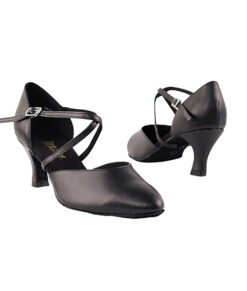What is Salsa dance? The Ultimate Guide to Salsa Dancing: From History to Basic Moves
What is Salsa Dance?
Salsa dance is a captivating and dynamic form of social dance that emerged within the Latin American communities, encapsulating the vibrant spirit and rich cultural heritage of its origins. The dance is performed to the rhythmically diverse salsa music, a genre that intricately weaves together elements of Afro-Cuban beats, Latin jazz harmonies, and other rhythmic influences to create a lively, irresistible soundscape.
Characterized by its energetic and sensual movements, salsa dance is a harmonious blend of swift footwork, graceful turns, and passionate partner exchanges. The dance style is notable for its intricate patterns and synchronized dynamics between partners, showcasing a seamless interplay of leading and following. This precision and fluidity provide a visual and sensory delight, making salsa a staple in social dances and performances worldwide.
The social significance of salsa dance extends beyond its technical aspects. It serves as a cultural vessel, reflecting the history and traditions of the Latin American communities from which it originates. Salsa’s communal nature fosters social connections and communal bonds, acting as a medium for expression and interaction in shared spaces such as clubs, socials, and gatherings. The dance floor becomes a melting pot where diverse backgrounds converge, united by the shared joy of movement and music.
Moreover, salsa dance is continually evolving, assimilating influences from various cultures and modern dance forms. This adaptability has allowed it to flourish in different contexts, from competitive dance arenas to casual social settings. Whether performed in its traditional form or infused with contemporary styles, salsa remains a testament to the enduring power of music and dance to bring people together.
Through its rhythmic complexity, vibrant energy, and social unity, salsa dance encapsulates a unique essence that resonates deeply with enthusiasts around the world. The interplay of musical intricacies and expressive movements continues to captivate and inspire, making salsa not just a dance, but a cultural phenomenon that transcends borders and generations.
A Journey Through Time: The History of Salsa Dancing
Salsa dancing has a rich and intricate history that traces its roots to the rhythmic beats of Cuban Son and Afro-Cuban dance forms. Emerging in east Cuba, the Cuban Son combined Spanish guitar melodies with African percussion, crafting a unique sound that now forms the foundation of salsa music. Over time, this genre absorbed elements from other local music and dance traditions, reflecting the diverse cultural landscape of the Caribbean.
The mid-20th century marked a pivotal period in the development of salsa dancing. The Cuban Revolution in 1959 inadvertently facilitated the migration of many Cuban musicians to the United States, particularly New York City. The vibrant Latin neighborhoods of New York served as fertile grounds for the fusion of these Cuban rhythms with other musical styles such as jazz, mambo, and rumba. This cultural melting pot birthed the modern genre known as salsa.
Iconic figures played an instrumental role in shaping salsa as we know it today. Artists such as Tito Puente, Celia Cruz, and Johnny Pacheco emerged as pioneers, pushing the limits of salsa music and dance. Tito Puente, often called “El Rey” (The King), brought a percussive brilliance to the genre, while Celia Cruz captivated audiences with her powerful voice and dynamic stage presence. Johnny Pacheco, co-founder of Fania Records, was pivotal in popularizing salsa globally, effectively branding it as a distinct musical genre.
Salsa’s evolution did not stop at the shores of the United States. It continued to absorb influences from various cultures, creating a dynamic and continuously evolving art form. Modern salsa now includes elements from Puerto Rican bomba and plena, as well as American jazz, making it a truly global phenomenon. This cultural amalgamation is evident in contemporary salsa’s diverse styles, from the energetic LA salsa to the intricate footwork of Cuban casino.
The history of salsa dancing is a testament to the power of cultural fusion and the resilience of artistic expression. Today, it continues to thrive, celebrated in dance studios, nightclubs, and international festivals. Its roots, deeply embedded in a rich tapestry of history, ensure salsa’s enduring appeal and perpetual evolution.
Salsa in America: When Salsa Became Popular
The introduction of salsa dancing to the United States can be traced back to the 1940s and 1950s, when Cuban musicians and dancers brought their rich cultural traditions to American shores. New York City, with its vibrant Latin community, soon became a melting pot for these unique rhythms and movements. Salsa began to weave itself into the cultural fabric of the city, carving out spaces in nightclubs and dance halls where enthusiasts could gather and share their passion.
By the 1960s, salsa had established a firm foothold in American music and dance culture. The formation of Fania Records in 1964 played a pivotal role in this transition. Often referred to as the Motown of Latin music, Fania Records signed some of the most influential salsa artists of the era, including Celia Cruz, Willie Colón, and Héctor Lavoe. These artists and their groundbreaking albums helped propel salsa into the mainstream, capturing the hearts and feet of dancers across the nation.
The 1970s saw a significant boom in the popularity of salsa. New York continued to lead the charge, with the South Bronx and Spanish Harlem serving as epicenters for the salsa explosion. Dance clubs like The Corso and The Cheetah became iconic venues, hosting electrifying performances that drew in diverse audiences. The 1972 documentary “Our Latin Thing” highlighted the excitement of the New York salsa scene, further contributing to its allure and reach.
Other U.S. cities, particularly Miami and Los Angeles, also played crucial roles in the spread of salsa. Miami, with its large Cuban population, embraced salsa dancing as an integral part of its cultural identity. Meanwhile, Los Angeles cultivated a unique West Coast salsa scene influenced by Mexican and Central American rhythms. Across America, salsa festivals, dance competitions, and television appearances continued to propel the genre into new heights of popularity through the 1980s and 1990s, establishing salsa as a staple in American dance culture.
Feeling the Beat: The Rhythm of Salsa
Salsa dancing is intrinsically tied to the rhythm of its music. Understanding the basic rhythmic structure of salsa is essential for anyone aspiring to master this dynamic and vibrant dance form. At the heart of salsa music lies the ‘clave’ rhythm, a fundamental pattern that influences every beat and movement. The clave consists of a two-measure pattern, most commonly in a 3-2 or 2-3 sequence, where the timing of the beats creates a syncopated, yet steady flow that dancers can follow.
The clave rhythm serves as the guiding framework, providing dancers with cues on how to time their steps and transitions. For beginners, grasping the clave’s pattern might seem challenging at first. However, with practice, listening to salsa music and identifying the clave becomes second nature. To start, focus on identifying the strong beats: the first beat (downbeat) and the fifth beat in each measure. These are typically more pronounced and serve as anchors for your steps.
Another essential aspect of salsa music is understanding how to listen for beats and changes. The basic timing in salsa follows a quick, quick, slow pattern. Listening to the different instruments in salsa music, such as the congas, timbales, and cowbells, can also aid in recognizing the rhythm. Each instrument often follows a specific pattern that complements the overall clave structure.
For dancers, synchronizing movements with the melody involves not just hearing the beats, but feeling them. This connection between music and movement is what brings salsa dancing to life. By counting the beats and practicing with a partner, dancers can improve their ability to stay in sync with the music. Additionally, incorporating practice sessions where you dance to various salsa songs can enhance your rhythm recognition skills, making it easier to adapt to different musical compositions.
Ultimately, mastering the rhythm of salsa requires patience and consistent practice. Developing an ear for the clave and internalizing the beat will gradually lead to a more natural and fluid dance experience. Embrace the music, let the rhythm guide your movements, and soon you will find yourself moving effortlessly to the infectious beat of salsa.
Movin’ and Groovin’: Basic Salsa Dance Movements
Salsa dancing, known for its rhythmic flair and infectious energy, is a captivating art that starts with mastering the basic movements. Integral to salsa dancing are a few foundational steps and turns that serve as the building blocks of more intricate routines. Understanding and practicing these basic movements are essential for beginners to gain confidence on the dance floor.
The forward and backward basic steps are often the first movements introduced in salsa dance classes. For the forward basic step, begin with a slight shift of weight onto one foot, stepping forward on the first beat. Shift your weight again to step back on the fourth beat. Conversely, the backward basic mirrors this movement but starts with a step back on the first beat, creating a fluid back and forth motion.
Side steps add a lateral element to your salsa routine. Starting with feet together, step to the side on the first beat, bring the feet back together on the second beat, and step to the side again on the third beat. This lateral movement, combined with the basic steps, forms the foundation for many salsa dance patterns.
The right turn introduces a dynamic twist to the dance. This movement typically begins from the basic step position. On beat one, step forward with your left foot, followed by a pivot on your right foot on beat two. Complete the turn by bringing your left foot parallel to the right on the third beat. It is crucial to maintain balance and coordinate your movements smoothly to execute this turn effectively.
For those eager to refine their technique, visual aids and video tutorials can be invaluable. Numerous online resources and video platforms offer demonstrations of these steps, allowing dancers to observe professional movements and practice at their own pace. Embarking on your salsa journey with these basic steps will lay a strong foundation, paving the way for more advanced moves and patterns.
Exploring Different Styles of Salsa
Salsa dancing, a vibrant and dynamic form of social dance, has evolved into several distinct styles, each with its unique flair, rhythm, and technique. One of the most celebrated styles is Cuban Salsa, often referred to as Casino. Cuban Salsa is characterized by its circular movements and intricate turn patterns, originating from the traditional Cuban Son and Cuban Rumba. This style emphasizes a partner’s close connection and fluid motion, mirroring the lively atmosphere of Cuban social gatherings.
In contrast, LA Style Salsa, or Los Angeles Style, showcases a flashier and more linear approach. This style, largely influenced by Latin ballroom dance and often performed in a slot, features high-energy spins, dips, and acrobatic moves. The emphasis on visual performance makes LA Style a favorite in competitive salsa dancing and showcases its West Coast origin.
New York Style Salsa, commonly known as Salsa On2, is noted for its elegant and smooth linear movements and is danced to the beats of Mambo music. Rooted in the jazz and swing influences of New York City, this style is danced on the second beat of the music, as opposed to the first, which distinguishes it from LA Style. Introduced by Eddie Torres, it places a strong emphasis on timing, styling, and sophisticated footwork, making it a staple in the NYC salsa scene.
Colombian Salsa, or Cali Style, is renowned for its quick footwork and exuberant pace. Hailing from the Salsa capital, Cali, Colombia, this style incorporates intricate steps and often features fast-paced, rhythmic movements on the lower half of the body while the upper body remains relatively still. Colombian Salsa is heavily influenced by traditional Colombian Cumbia and often blends with local folklore, creating an energetic and captivating dance experience.
The Social Side of Salsa: Events and Communities
Salsa dancing extends far beyond the realms of technique and footwork; it represents a vibrant and inclusive community that thrives globally. Salsa communities serve as the cornerstone of this dance form, fostering an engaging environment where enthusiasts come together to celebrate and share their passion. Whether you are a seasoned salsero or a beginner, social dance events offer a place to connect, learn, and immerse oneself in the culture of salsa.
Social dance events are abundant, varying from local dance nights hosted by salsa clubs to larger gatherings like salsa congresses and festivals. These events are the heartbeats of salsa communities, providing a platform where dancers can practice, showcase their skills, and gain inspiration. Local dance nights are especially significant for fostering a sense of regular connection and community. They offer a relaxed setting where dancers of all levels can come together, socialize, and enjoy the music.
On a larger scale, salsa congresses and festivals are spectacular events that draw attendees from around the world. These gatherings typically span several days and feature workshops, performances, and social dancing marathons. Renowned instructors lead workshops, offering participants the opportunity to enhance their skills and learn new techniques. The performances, often by world-class dancers, are not only entertaining but also deeply motivating, showcasing the pinnacle of what can be achieved in salsa dancing.
Moreover, these salsa festivals and congresses serve as cultural melting pots, where people exchange ideas, traditions, and styles. They are places where friendships are forged borders and linguistic barriers fade away, unified by a shared love for salsa. The international salsa community is known for its warmth and inclusivity, making newcomers feel welcome and valued.
Thus, social dance events and the broader salsa community play a crucial role in the evolution and dissemination of the dance. They embody the communal spirit of salsa, encouraging continuous learning and cultural exchange. Whether you are looking to hone your skills, meet like-minded individuals, or simply experience the joy of dancing, the social side of salsa offers a rich and fulfilling journey.
Embarking on your journey into salsa dancing can be thrilling but also a tad overwhelming. For newcomers, it is crucial to find a local class to join. A professional salsa class provides the structure, guidance, and community necessary to develop your skills. Search for reputable studios or community centers that offer beginner-friendly lessons. You may also find social dance events where introductory classes precede the main dance event.
Practicing with a partner plays a vital role in your progress. Whether you bring your own partner or find one through your class, regular practice helps you to internalize the steps and develop a connection with your dance partner. If possible, dedicate time outside of class to practice. However, remember that patience is essential. Salsa dancing is an art that takes time to master, so allow yourself to make mistakes and learn from them.
When it comes to attire, comfort is king. Opt for clothing that allows easy movement, such as breathable fabrics and comfortable dance shoes. Avoid heavy or restrictive outfits that might hinder your performance. Dance shoes with a suede sole are recommended as they provide the right balance of grip and slide on the dance floor, minimizing the risk of injury.
Overcoming nervousness is another challenge for beginners. To ease anxiety, remind yourself that salsa dancing is as much about enjoyment as it is about technical accuracy. Everyone starts somewhere, and your classmates are likely facing the same challenges. Focus on having fun, which will naturally make you more relaxed and fluid in your movements.
Finally, immerse yourself fully in the dance. Listen to salsa music regularly to familiarize yourself with the rhythms and beats. Watch professional salsa dancers to gain insight into body movements and styles. Embrace the vibrant culture associated with salsa dancing, and enjoy the joyful community that comes with it.
By following these beginner tips, you will find that your salsa dancing journey becomes a rewarding and enjoyable experience.
Stay with us.









